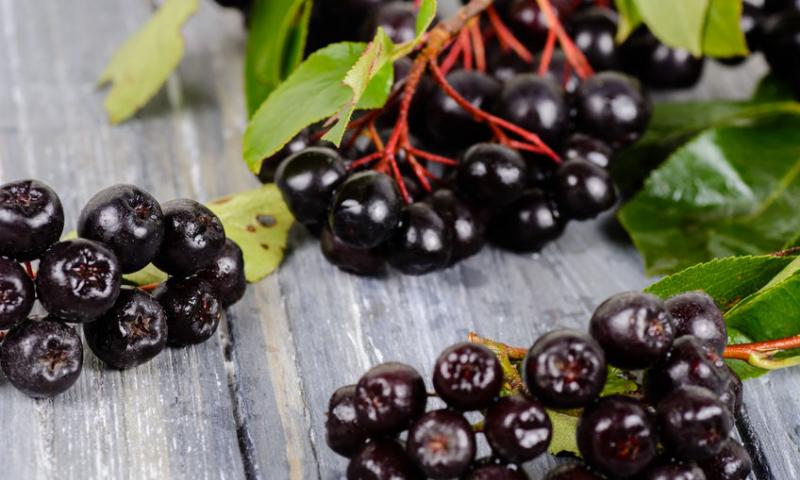 />
/>
COMMON NAME: Aronia
LATIN NAME: Aronia Melanocarpa
ORIGIN: Eastern North America
HABITAT: The homeland of Aronia is Eastern North America. In Europe, this plant appeared only after the Second World War. Different species were bred since that time, including winter-hardy, more productive varieties of Aronia, resistant to fruit pests and diseases. In general, Aronia Melanocarpa is bred as an ornamental and fruit plant in parks and garden.
BOTANICAL INFORMATION: Aronia (lat. Aronia melanocarpa) is a species of the genus Aronia belonging to the subfamily Maloidae from the family Rosaceae. The genus includes about 15 species, growing mainly in moist places.
Aronia is a shrub up to 2-5 m high. The old trunks are grayish-black in color; the young branches are cherry red. The leaves are pointed, up to 8 cm long and 4 cm wide. In summer, the leaves are dark green on top and lighter below. In autumn they become red. The flowers of the shrub are white or pinkish, collected in corymbose inflorescences.
The fruits of Aronia are little apples, almost black or dark purple, juicy, with a diameter of up to 1.5 cm. The plant blossoms in May-June, fruits ripen in late August - September. The yield of Aronia Melanocarpa is from five to eight kg per bush. Aronia propagates by root offspring and cuttings.
CHEMICAL COMPOSITION: The fruits of the plant are characterized by a rich chemical composition. The berries contain organic acids, pyrodoxin, tannins,pectin substances, riboflavin, ascorbic acid, carotene, rutin,folic acid, nicotinic acid, vitamin E, phylloquinone, niacin, tocopherols thiamine, as well as amygdalin, coumarins, quercetin, anthocyanins, flavonoids and other compounds. Manganese, iron, iodine, and also salts of molybdenum, manganese, boron, and copper are especially distinguished from macro- and microelements.
The amount of vitamin P in Aronia fruits is 2 times more than in blackcurrant, and 20 times more than in oranges and apples. The plant is also rich in iodine, which is 4 times higher than in strawberries, gooseberries and raspberries. Aronia accumulates iodine, which is absorbed by the roots from the soil. Thus, the content of this trace element depends on the region of growth: the richer the soil in iodine, the more iodine is in the fruits.
INTERESTING FACTS:
The Latin name for Aronia (lat. Aronia Melanocarpa) literally translates as "healthy black berry."
You can make juices, jams, marmalade from Aronia berries.
Biologically active dye is obtained from the plant’s berries, which is used in the confectionery industry.
*This article is for informational purposes only. We suggest consulting a physician before using these or any other herbal supplements.
